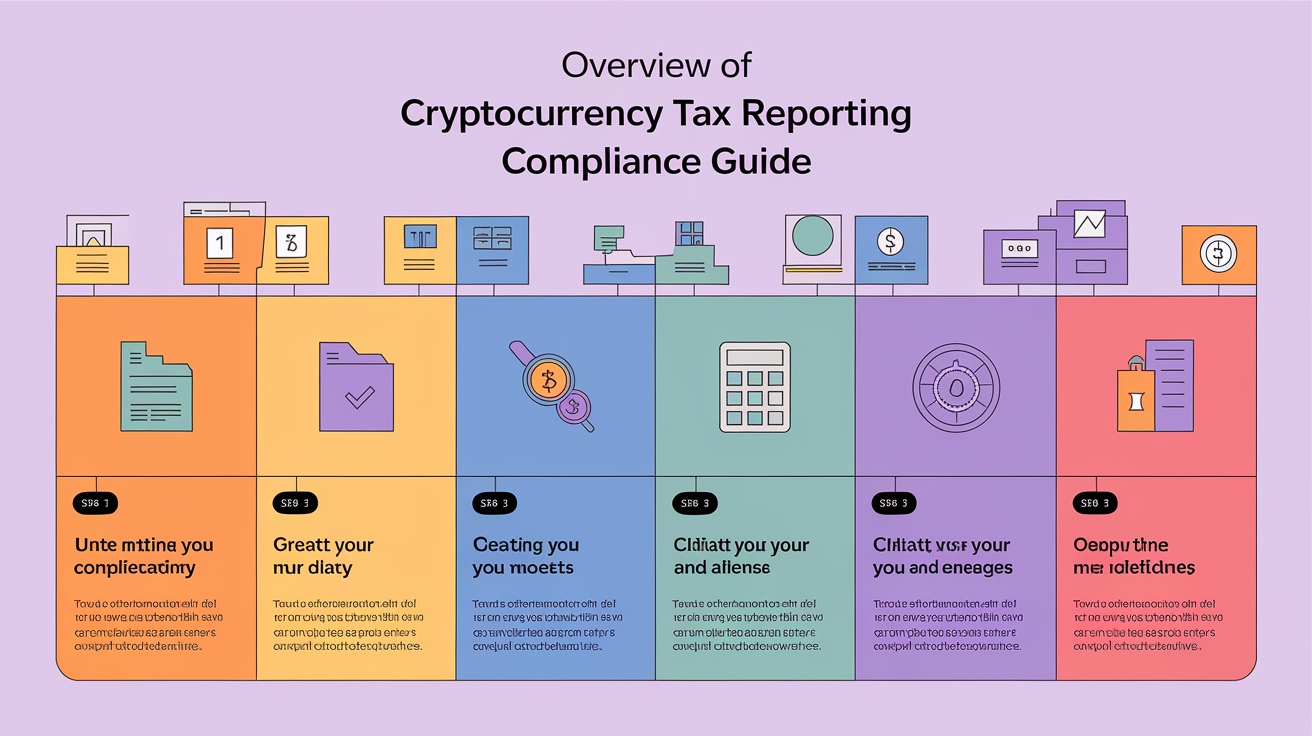Overview of cryptocurrency-tax-reporting-compliance-guide
Cryptocurrency taxation may feel overwhelming—like standing at the bottom of a mountain with no climbing gear. But with a clear map and step-by-step guidance, you can avoid missteps that might leave you at risk of penalties. In the United States, the IRS views cryptocurrency as property, not currency, meaning every taxable event—be it selling bitcoin, swapping ethereum, cashing out DeFi yields, or receiving NFT airdrops—has potential reporting consequences.

Your income level, filing status, and the nature of your gains all influence your tax rates. For short-term capital gains, you could face rates between 10% and 37%, while long-term gains may sit between 0% and 20%. Even small transactions or losses must be reported, as outlined in detailed IRS guidance. Skipping these reports can lead to steep tax penalties or even audits, according to the official IRS newsroom.
Beginning January 1, 2025, brokers and crypto exchanges must issue a new Form 1099-DA for gross proceeds, with cost basis reporting starting in 2026. These changes, described in Coinbase’s regulatory overview, will make compliance both more transparent and more demanding.
Gathering and organizing transaction data
The first challenge is collecting all your digital asset activity. Missing even one exchange withdrawal or NFT sale can throw off your calculations. Think of it like baking bread—you need every ingredient in the right amount, or the outcome will be flawed.

Because the IRS now requires wallet-by-wallet accounting for 2025 onward, as noted in compliance updates, your records must be meticulously detailed. Self-transfers, staking rewards, mining income, and even tiny microtransactions count.
- Download CSV reports from every crypto exchange and DeFi platform you’ve used.
- Document off-exchange transactions such as peer-to-peer trades or NFT flips.
- Record fair market value at the time of each transaction using reliable sources.
- Note the purpose—was it a sale, swap, payment, reward, or transfer?
- Include cost basis (the original value you paid) for every acquisition.
Specialized crypto tax software tools can streamline this process, avoiding spreadsheet chaos and reducing human error.
Calculating gains, losses, and income
Once your records are tidy, the next step is the math. This stage often intimidates taxpayers—it can feel like solving a puzzle where each piece is a different shape. But breaking it into clear categories helps.

Identify the types of taxable events
- Capital gains/losses: Selling bitcoin or trading ethereum for another coin.
- Ordinary income: Mining rewards, staking payouts, airdrops.
- Miscellaneous: Payments received in crypto for goods or services.
Choose your cost basis method
The IRS allows several calculation methods. Most common are FIFO (first in, first out) and LIFO (last in, first out). Your choice can change your taxable amount, so consistency is key.
Step-by-step calculation process
- For each sale or disposition, subtract cost basis from sales proceeds.
- Separate short-term and long-term transactions (short-term = assets held for one year or less).
- Apply fair market value for income events like staking rewards.
- Total each category to find net gains or losses.
Using a crypto tax calculator can automate these steps and improve accuracy.
Preparing and filing tax forms
Filing is where calculations meet legal structure. If you’ve done your record keeping diligently, this step becomes far less stressful—more like following a recipe than guessing the ingredients.
Capital gains and losses go on IRS Form 8949 and then flow to Schedule D (Form 1040). Income from crypto appears on Schedule 1 for miscellaneous income, or Schedule C/SE if it’s self-employment, as outlined in Fidelity’s crypto tax guide.
- Form 8949: Itemized detail of each crypto sale or disposition.
- Schedule D: Summary of total capital gains/losses.
- Schedule 1/C/SE: Reporting various forms of crypto-related income.
You can choose to file manually or use tax software designed for crypto users, such as TurboTax for cryptocurrency, which guides you through importing exchange data and linking it to the correct forms.
Ensuring ongoing compliance and audit readiness
Compliance isn’t a one-time task—it’s a habit. Ignoring updates in the blockchain tax landscape is like failing to maintain your car; sooner or later, you’ll face breakdowns.
From 2025, meticulous wallet-by-wallet accounting and transparent tracking of self-transfers become mandatory. The Kraken crypto tax guide emphasizes the importance of continual record keeping and using professional-grade tools. That habit not only reduces errors but prepares you for a possible IRS audit.
Best practices for staying compliant
- Review your transaction logs monthly, not just at year-end.
- Stay informed on tax regulation changes through reliable resources like IRS digital asset updates.
- Consult a tax professional familiar with virtual currency regulations before making large transactions.
- Retain records for at least seven years to cover the audit window.
In a rapidly shifting environment, proactivity is your best defense. By keeping your compliance toolkit ready—accurate records, updated knowledge, and professional support—you turn the mountain into a manageable hike, step by step.







